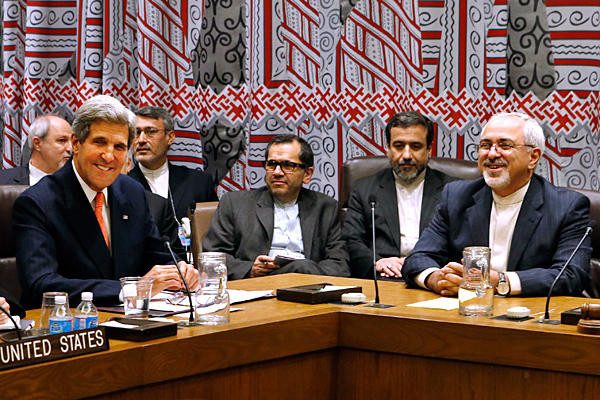Breakthrough Nuclear Deal
- Iran has agreed to limit the scope of its nuclear program
- US-led sanctions on Iran will be lifted
- Tehran has accepted managed access to its nuclear facilities
- Tehran has accepted a ‘snapback’ clause where sanctions can be re-imposed if there is any violation of the enrichment commitments
The long-awaited nuclear rapprochement between Iran and the US-led P 5 + 1 nations is a development of significant import both at the regional and global level with many overlapping strands of strategic relevance — many of which will have a bearing on the Indian calculus.
While the full text of the final agreement — ‘where even one comma could make a difference’ — is yet to be released, the broad contours are as follows: Iran has agreed to limit the scope of its nuclear program so that it is not nuclear weapon capable; US-led sanctions on Iran will be lifted; Tehran has accepted managed access to its nuclear facilities (this issue had delayed the agreement and now a modus vivendi has been reached whereby Iran can challenge the access sought by external inspectors); and Tehran has accepted a ‘snapback’ clause where sanctions can be re-imposed in a period of 65 days if there is any violation or transgression of the enrichment commitments entered into.
‘Surrendered’ Too Much for Too Little?
This is an agreement that has been on the horizon for some months and in April last the first glimmer of hope was articulated by the principal interlocutors. US President Obama and his Iranian counterpart Hassan Rouhani must be commended for their perspicacity and determination in staying the course despite the bitter opposition of hard-liners or allies (in the case of the US).
Late night Monday there was heightened expectation that the agreement had been sealed when the Iranian President sent out a tweet that read:
#IranDeal is the victory of diplomacy & mutual respect over the outdated paradigm of exclusion & coercion. And this is a good beginning.
— Hassan Rouhani, Iranian President
However this was a case of jumping the gun and was soon withdrawn, but in a matter of 12 hours the elusive end had been reached. For sure, there will be intense criticism mounted against both the Presidents (Obama and Rouhani) for having ‘surrendered’ too much for too little. But the triumph of diplomacy — even if it is nascent and has to be monitored almost weekly — is welcome for many reasons.
The extended southern Asian region has been in a state of uneasy and contested geo-political flux since the beginning of the Iranian revolution in 1979. Concurrently the Soviet occupation of Afghanistan and the events of that decade saw the spread of the mujahedin ideology which culminated in the collapse of the Soviet Union in December 1991 that marked the end of the Cold War.
Will the Deal Help India?
India has been affected by these convulsions and the estrangement between Iran and the US-led western alliance has adversely impacted India’s holistic national interest.
The better known eventuality has been the pressure on India and other Asian economies to reduce their hydrocarbon imports from Iran.
The tentative rapprochement between Iran and the US-led cluster will have a bearing on India’s interests across three determinants — the geo-political; geo-economic; and geo-physical. Bringing Iran back into the global comity will have an immediate impact on issues like Afghanistan, Iraq and Syria where varying degrees of jihadi/terror-related violence and sectarian civil war are now unspooling on a daily basis. How Tehran will position itself given the Saudi Arabia– Iran (read Sunni-Shia ) relationship remains to be seen but the operative point is that Iran has now been brought back into the regional and global geo-political and diplomatic tent.
Specific to Afghanistan, it may be recalled that India had engaged with both Iran and Russia in the early 1990s in supporting the Northern Alliance against the Taliban.
The geo-economic implications are also considerable, for Iran is the world’s fourth largest oil producer and has been extracting its valuable natural resource well below optimum levels. The lifting of sanctions will see a major investment and modernization of Iran’s long-neglected hydrocarbon sector and this will be good news for major oil importers like India.
The third strand — the geo-physical encompasses the trade and connectivity possibilities that are very significant for India. Iran and its ports — particularly Chabahar open up transport linkages for India that will trump Pakistani intransigence. In the most positive exigency, Iran can offer transit routes to Afghanistan and Central Asia with concomitant geo-political and geo-economic returns for India.
These are broad contours of what may ensue over the coming months – but the possibility of domestic backlash in both Washington and Tehran cannot be discounted.
(The author is Director, Society for Policy Studies, New Delhi.)
